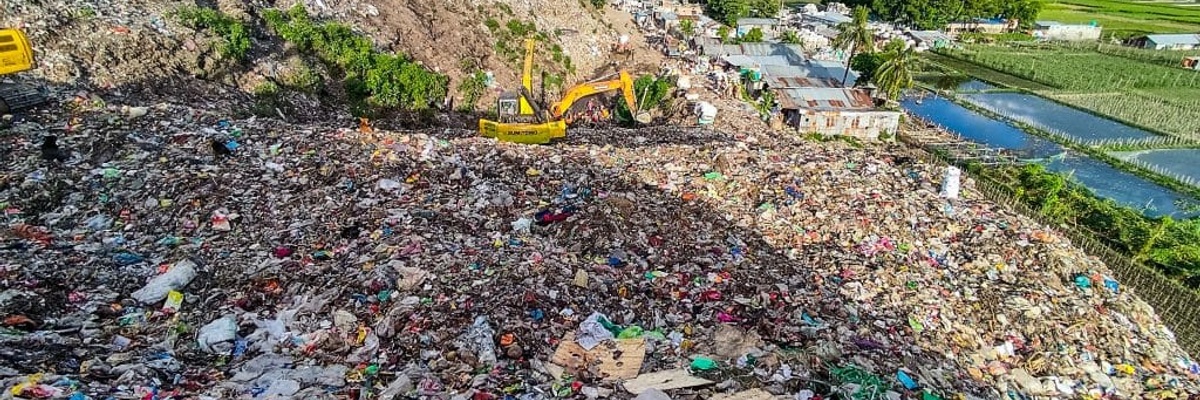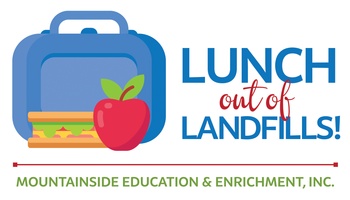Form your Green Team
First, identify the student leaders who will be spearheading your program. Your Green Team is a group of five idealists who are creative and ready to make a change in your schools. Through working directly with the team at Mountainside Education and Enrichment, this team of 5 will devise a plan of meeting your school where it is and creating a plan for reducing food waste, redistributing food to the school and broader community, and connecting with other likeminded changemakers in your community setting a new standard for environmental advocacy.
Crown your Staff Champions
Support your students in understanding that their teachers, school administrators, cafeteria workers, and building services team are important members of your school community. It is necessary to have the whole school community on board: and it will strengthen your project to have their insights, talents, and ideas as part of your school-wide program!
Every Lunch Out of Landfills program starts with a Staff Champion. You may be an environmental sciences teacher, a social sciences teacher who understands that food is a question of community health, an administrator who wants to bring the whole school together, or a worker in dining or building management who is passionate about the inner workings of a healthy school system. You will be in charge of managing your monthly meeting and checking in with your students' progress through the rollout of the Lunch Out of Landfills program.
Help the students engage with their administration and staff team. Their enthusiasm, under your guidance, is a transformative force.
Plan a Waste Sort
A waste sort is a compelling way to put the problem into perspective. Here is a guide to conducting a one-time waste sort.
A one-time waste sort is an opportunity to see how much perfectly good food goes into your waste stream. Every day, unopened beverages, snacks, and fresh products are thrown away, simply because students don't see another option. A waste sort is a way to collect all of those products and see the scale of the problem, and get excited about reducing hunger and waste in your own community with a Sharetable.
Students lead this activity and get their hands (proverbially) dirty, while you make sure the details are thought of and accounted for.
Build a Sharetable
Building a Sharetable is your students' chance to get creative. Some Sharetables look like farmer's market stands, some have posters reminding students how to recycle, some include education materials so the school community can learn more about the problem of food waste. All of them are a place to put clean and perfectly good food that otherwise would have gone into the trash.
See a sample guide to building a Sharetable and more tools in our Resources section.
Educate and Grow
Every school forges their own suitable path at this stage, with the help of their Teacher Champion and the team at Mountainside. Your students' passion enthusiasm will lead this step, and we will support you in providing them the options that are most appropriate and effective for your school and community. Your waste sort and Sharetable is just the beginning, and the rest of your budget- outside of the stipend for you, Teacher Champion, to ensure you are fairly supported for your commitment to your students- can be allocated where your students' passions lie.
Effective ideas include:
- Maximizing waste diversion by installing a multiple bin waste sorting system that separates disposed liquids, compostable materials, and recyclables from trash. Learn how with this Step-by-Step Guide.
- ِNo one is creating a healthier, greener planet alone. Research who else in your area shares your vision, and Invite local partners to meet with your Green Team. This could include recycling programs, food pantries, farmer's markets, compost services, and local green nonprofits. Every connection has a world a possibilities for making your school a hub of change.
- Your school board and local government play key roles in deciding what students across the region are learning about food waste, what foods they are accessing, and how policies are chosen for transforming these practices for the better. Connect with them to be involved in change not only at your own school, but in schools and communities in your region.









 "Follow this simple map to turn your school into a center of positive change for a healthier planet and community."
- Mountainside Education and Enrichment
"Follow this simple map to turn your school into a center of positive change for a healthier planet and community."
- Mountainside Education and Enrichment
